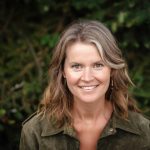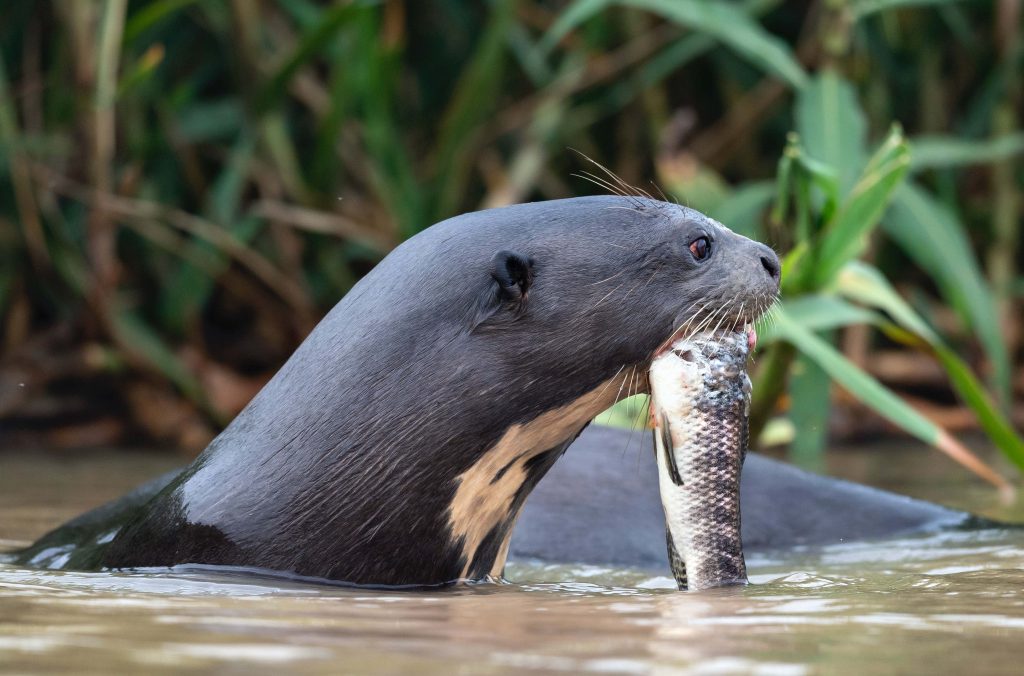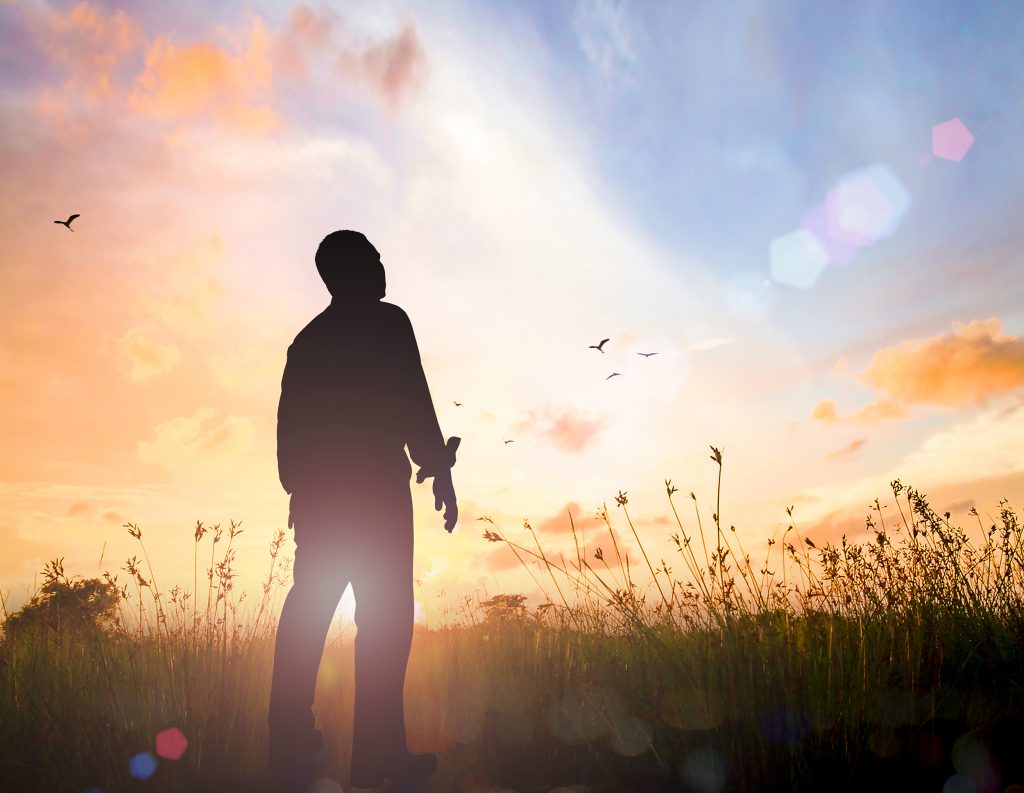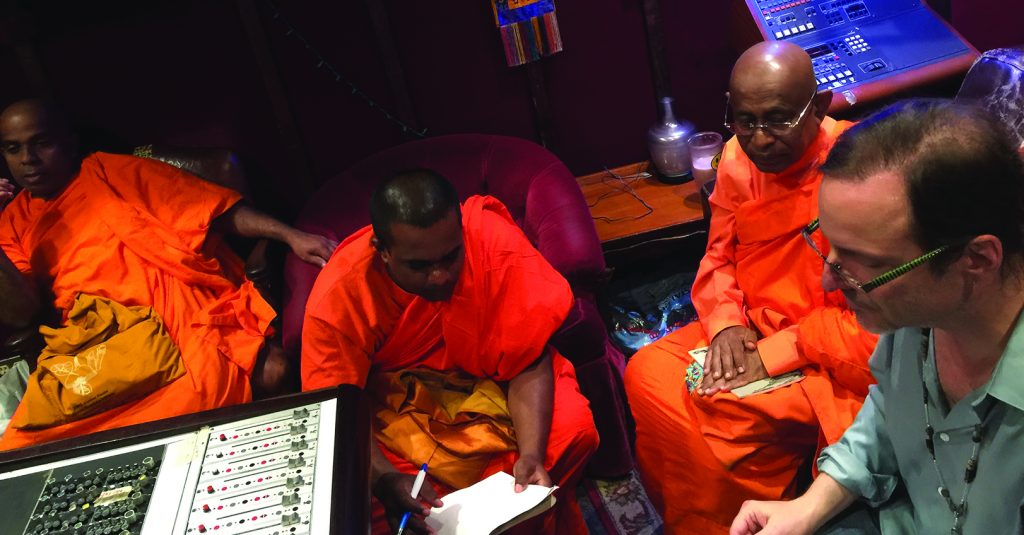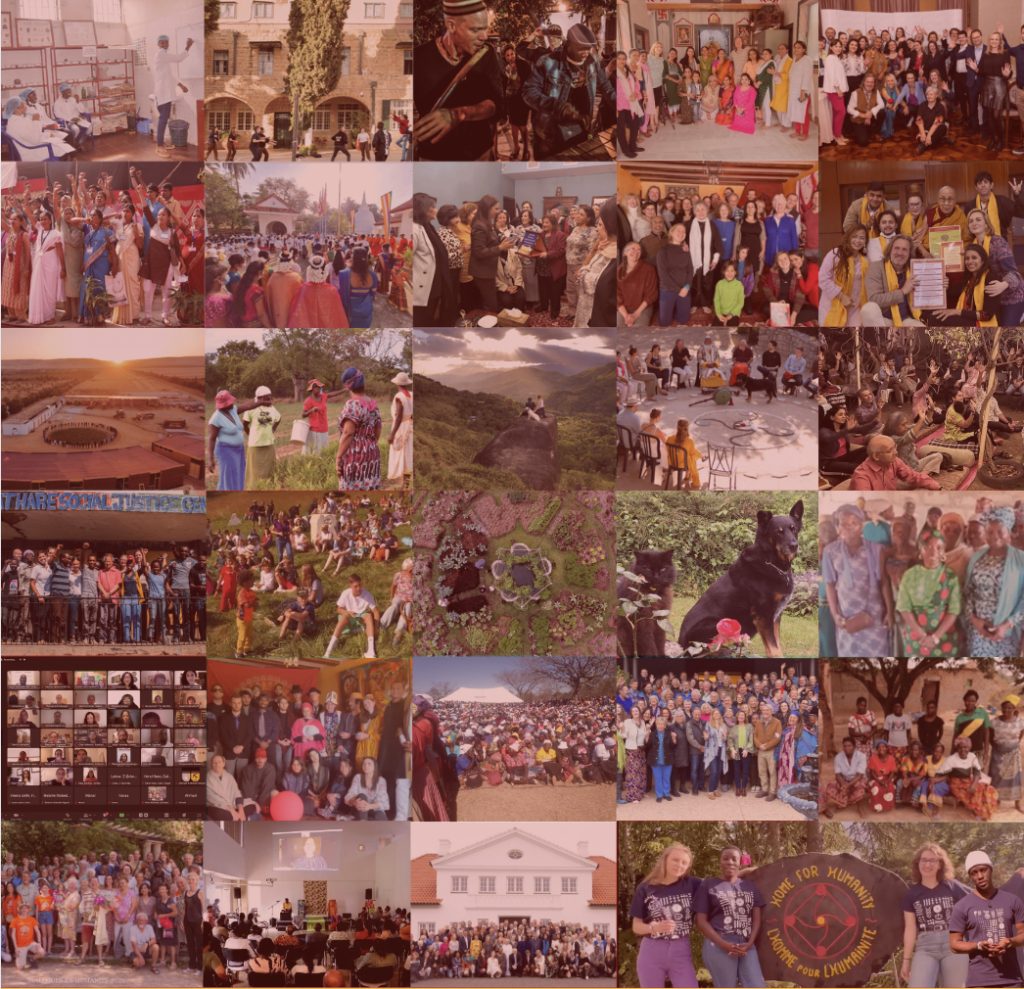Listening to the Intelligence of Your Body
Connect to Nature
Nature lives in perpetual asana. Tree branches, trunks, and roots inhabit unique shapes in a dance with wind, sun, and soil. Monkeys climb, birds flutter, and dolphins ride waves. Yoga poses originated from yogis witnessing nature. Ancient yogis were trying to find the path to restore us to our instinctual nature. Many poses are named after animals. In the wilderness, we can remember how to inhabit our bodies. I feel my body within the body of Earth, deepening my connection to myself and the wild world.
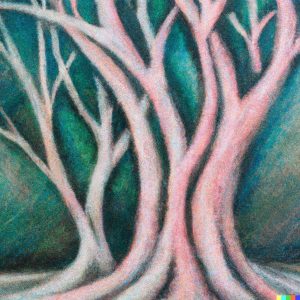 Nature shows us how to do Wild Yoga. Walk in the forest or sit in the desert and watch what trees, rocks, and animals do. Living at the edge of Tucson, Arizona, I watched the javelinas as they wandered near my home. Their movements followed a rhythm — walking, pausing, lifting a leg, and holding it midair. In Alaska, I spent time with the brown bears. They would fish from a boulder — moving their heads back and forth to survey the water, diving in to catch salmon, climbing back on the rock — or play with their young along the shore. Sometimes I embodied the movements I saw. I wanted to understand these animals, discover the motions of my body, and create poses. Each of us can play and pray like the original yogis, trying to find the shapes of our wild nature.
Nature shows us how to do Wild Yoga. Walk in the forest or sit in the desert and watch what trees, rocks, and animals do. Living at the edge of Tucson, Arizona, I watched the javelinas as they wandered near my home. Their movements followed a rhythm — walking, pausing, lifting a leg, and holding it midair. In Alaska, I spent time with the brown bears. They would fish from a boulder — moving their heads back and forth to survey the water, diving in to catch salmon, climbing back on the rock — or play with their young along the shore. Sometimes I embodied the movements I saw. I wanted to understand these animals, discover the motions of my body, and create poses. Each of us can play and pray like the original yogis, trying to find the shapes of our wild nature.
Some movements flow, shifting us from one pose to the next in a fluid meditation, like my flow from the tide pool to rocks to the ocean. When we are in a flow, we can witness how our body wants to move and let it direct us. Allowing your body to move you is the deepest yoga asana. If you can’t tell what your body wants, begin by exploring the poses I offer at the end of each chapter, and then ask your body if there is another way it wants to move. When our body directs our movements, they become prayer. Our body is a doorway to the sacred. We may feel ourselves touching Spirit.
Connect to the transpersonal — Earth, Spirit, Mystery — through the presence and motion of your body. Begin with the Earth. Notice where you feel drawn: Is it to the contact of rock, sand, or grass? Or to the sounds of wind, rain, or birds? We can understand wild places by listening to them through our bodies. I have done yoga asana in rain forests and canyons, on rivers and mountains. When we are fully present in our bodies, the places we inhabit can influence our awareness and communicate with us through the spontaneous movements of our bodies. Their energies can enter us and speak through us. Each wild place where we do yoga affects us differently. We can come to know each ecosystem and ourselves and sense the sacred communion between us.
Go out into nature. Or imagine yourself in a wild place. Perhaps do tree yoga: climb into the branches of a tree and notice how your arms and legs intertwine with the tree. Or do rock yoga: balance atop a rock and witness the landscape. Maybe balance in Tree Pose or Dancer. If you are new to yoga, begin with basic Tree Pose. Place the toes of one foot on the ground while resting that heel on your opposite ankle.
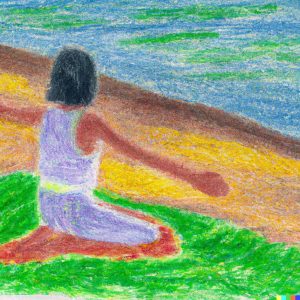 Notice how the presence of each place influences your movements and practice. Try practicing yoga in water — a lake, river, ocean, or swimming pool. Choose a safe place. If you are near the sea, do ocean yoga. Do Lotus (Padmasana), Half Lotus (Ardha Padmasana), or Squat Pose (Malasana) in the sand close to the surf. Wait for the waves to reach you. Once they arrive, notice how the sand shifts beneath you. If the ocean is a safe place for you, swim in it. Dive under a wave. Float an inch under the surface, perpendicular to a rolling wave. Feel it roll over your body. If the waves are big, float a few inches under the surface. Surf. Swim toward the shore as a wave approaches you from behind. Once it catches you, bring your arms forward over your head and connect your hands. Stay straight. Ride the wave to the shore or roll to the side to pull out. If you can’t be with the ocean, go there in your imagination and listen to the sounds.
Notice how the presence of each place influences your movements and practice. Try practicing yoga in water — a lake, river, ocean, or swimming pool. Choose a safe place. If you are near the sea, do ocean yoga. Do Lotus (Padmasana), Half Lotus (Ardha Padmasana), or Squat Pose (Malasana) in the sand close to the surf. Wait for the waves to reach you. Once they arrive, notice how the sand shifts beneath you. If the ocean is a safe place for you, swim in it. Dive under a wave. Float an inch under the surface, perpendicular to a rolling wave. Feel it roll over your body. If the waves are big, float a few inches under the surface. Surf. Swim toward the shore as a wave approaches you from behind. Once it catches you, bring your arms forward over your head and connect your hands. Stay straight. Ride the wave to the shore or roll to the side to pull out. If you can’t be with the ocean, go there in your imagination and listen to the sounds.
If you live in a city and cannot get anywhere wild, connect to the natural world wherever you are. Look up at the sky and see if you can feel a connection with the sun, moon, or stars. Feel the breeze or rain on your skin and commune with the trees, plants, or animals near you. Remember the wilderness that lived on the land before it became a city. Imagine what and who once lived there. Be in your body and imagination as you move.
Wild Yoga Practices for Listening to the Intelligence of Your Body
To listen in the ways that I am inviting takes time. Don’t give up. Be present with whatever is happening. Seek to create a loving relationship with your body and nature.
- Choose a moment in your day, perhaps first thing in the morning. Lie down. Notice what you feel. Turn on your favorite song or soak in the silence. See whether your body prefers to move or be still. Remain still until a movement arises. Notice how your body wants to move — perhaps by remembering poses from a yoga class or by making up movements.
- After witnessing your body in the practice above, ask your body how it wants to move and listen for a response. If nothing comes, be patient and keep asking. If the slightest urge to move arises, follow it. Notice what happens next. Are you called to stop or move differently? Follow the urges of your body.
- Then, lie still and notice without judgment how your body feels. Close your eyes. Breathe deeply. Imagine a wild place is holding you. Scan your body from toes to head, focusing your attention on each part of your body in turn. Notice if you feel any sensations. Stay out of your mind. Imagine your body is speaking. What do you hear it say?
- Engage in a daily body movement practice like yoga, dance, or tai chi. As you move, accept your body as it is. If you want to explore more about Wild Yoga using a video, you can watch the twenty-two-minute video Embody Your Wholeness at rebeccawildbear.com (or on YouTube: youtube.com/watch?v=vpWYCuW4Phs&t=2s). Embody the poses that feel comfortable.
- Heal your relationship with your body by journaling. Imagine a conversation between your mind and body and listen to the needs and wishes of each. Ask your body questions. How does it feel? What does it want? Be curious to understand more.
- Experience the world through childlike eyes: wander in nature and imagine you are seeing it for the first time. Connect to a sense of wonder. Notice where you are drawn and how nature influences the way you move. What sensations, images, or emotions arise? Do you feel the place receiving you or revealing something? Journal about what you discover.
A Yoga Pose for Listening to the Intelligence of Your Body
HAPPY BABY POSE
I encourage you to spend time in nature and explore the poses of Wild Yoga outside. Or, if you are not able, do them inside by remembering or imagining a wild place.
Happy Baby Pose (Ananda Balasana) is a hip opener. It energizes the body, releases the lower back and sacrum, stretches the hamstrings, soothes the spine, and calms the brain. This pose can relieve stress, tension, and fatigue while awakening a childlike curiosity. In addition, regular practice of this pose reduces stiffness in your lower back and hips and helps ease back pain.
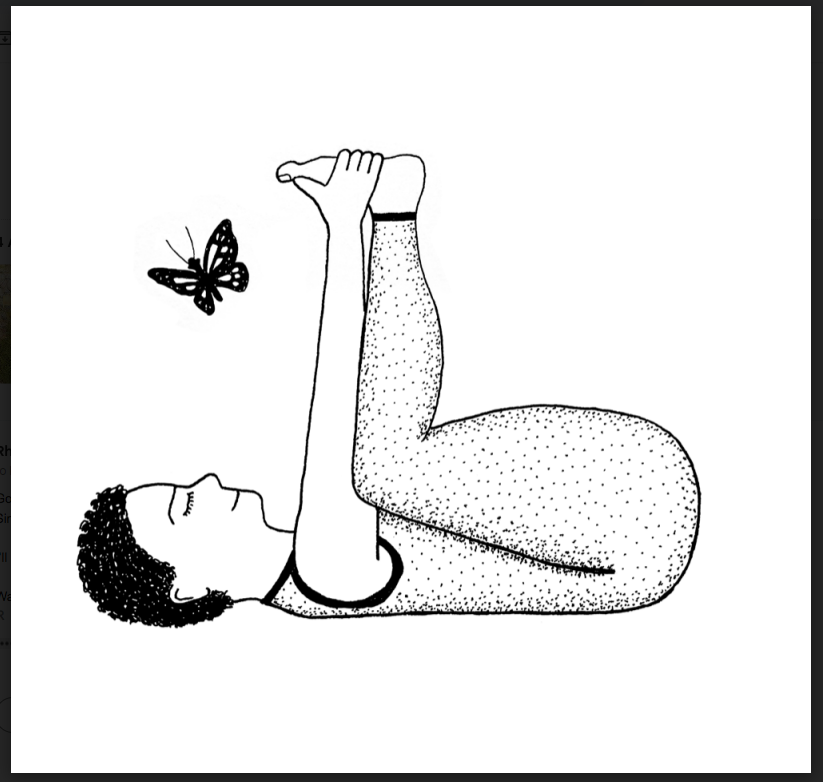
To get in the pose:
- Lie on your back on the ground (or on a bed if you need extra cushioning). Exhale and bend your knees into your belly while squeezing your perineum (the area between your anus and your scrotum or vulva). Press your tailbone into the ground.
- Inhale and grip the outside edges of your feet with your hands or place your first two fingers around your big toes. If you can’t reach your feet, hold your knees instead or loop a yoga strap around the soles of your feet and hold one end in each hand.
- Open your knees slightly wider than your torso and bring them toward your armpits. Keep pressing your tailbone toward the floor to protect your lower back.
- Position each ankle directly over your knees, so your shins are perpendicular to the floor.
- Flex through your heels and gently push your feet into your hands (or fingers or yoga strap).
- Explore the pose by moving however your body wants. Notice what feels pleasurable or evokes curiosity.
- Release your feet, knees, or the strap to come out of the pose.
While in Happy Baby Pose, imagine gravity as the Earth’s way of loving you. Let your body be as heavy as it is. Relax into the Earth’s embrace. Rest and receive nourishment. Be still or explore movement — follow your body’s impulses. Imagine yourself as a newborn babe, having just arrived in your human body for the first time. What do you notice? Ask your body: What feels good? Play. Perhaps roll from side to side.
Close your eyes and listen more deeply. Track whatever arises. Perhaps slide your hands down to your knees and roll again from side to side. Let your nose turn toward the floor as you roll onto each side and release your neck. Move as slowly as you like. Imagine breath and gravity moving you. Invite feelings of ease and relaxation. How little effort can you put forth? Attend to the sensations you feel within your body and listen for what they may reveal.
Playing in Happy Baby Pose invites us to be at home, relaxed in our bodies, experiencing our connection to the Earth. Yet that’s just a start — our relationship with the natural world can grow. There is more the trees, water, and rocks can show us, if we are willing to listen. In the next chapter, we will learn how to deepen our perception and offer our attention to nature, so that we may receive its wisdom and guidance.
Excerpted from the book from Wild Yoga: A Practice of Initiation, Veneration & Advocacy for the Earth. Copyright ©2023 by Rebecca Wildbear. Printed with permission from New World Library — www.newworldlibrary.com.


